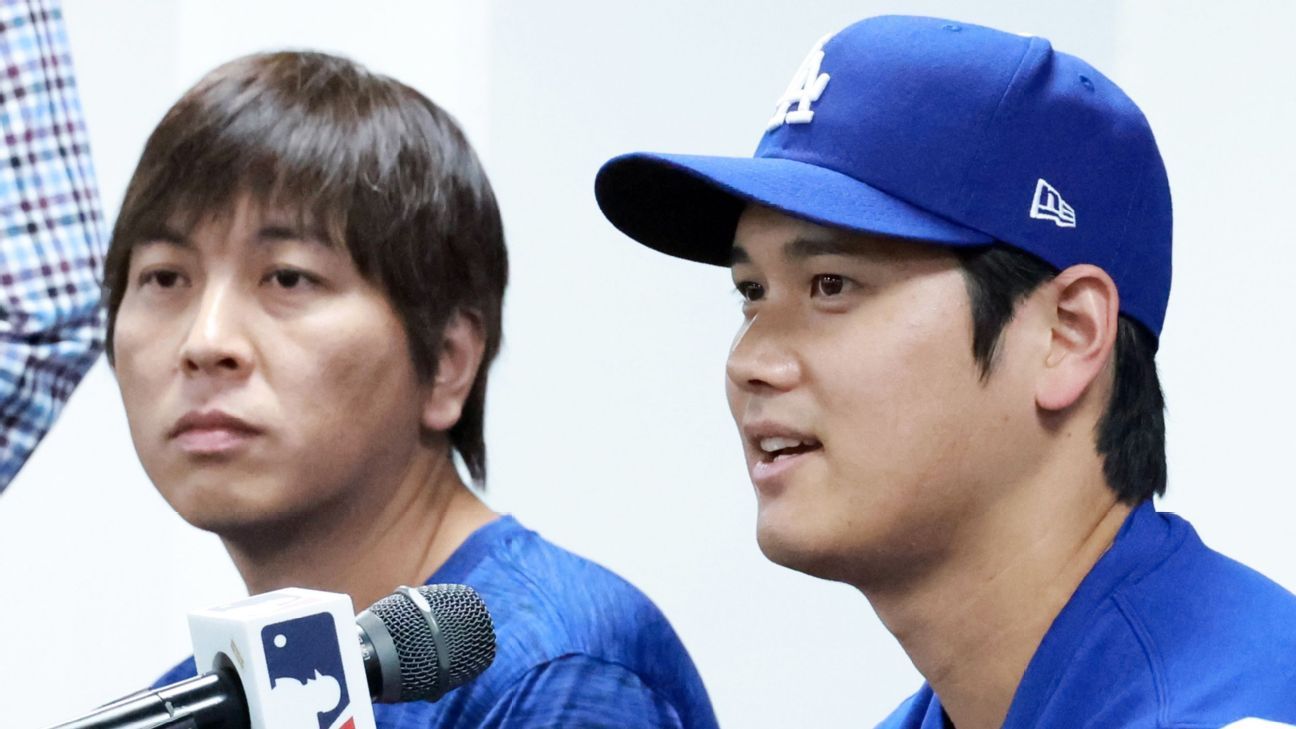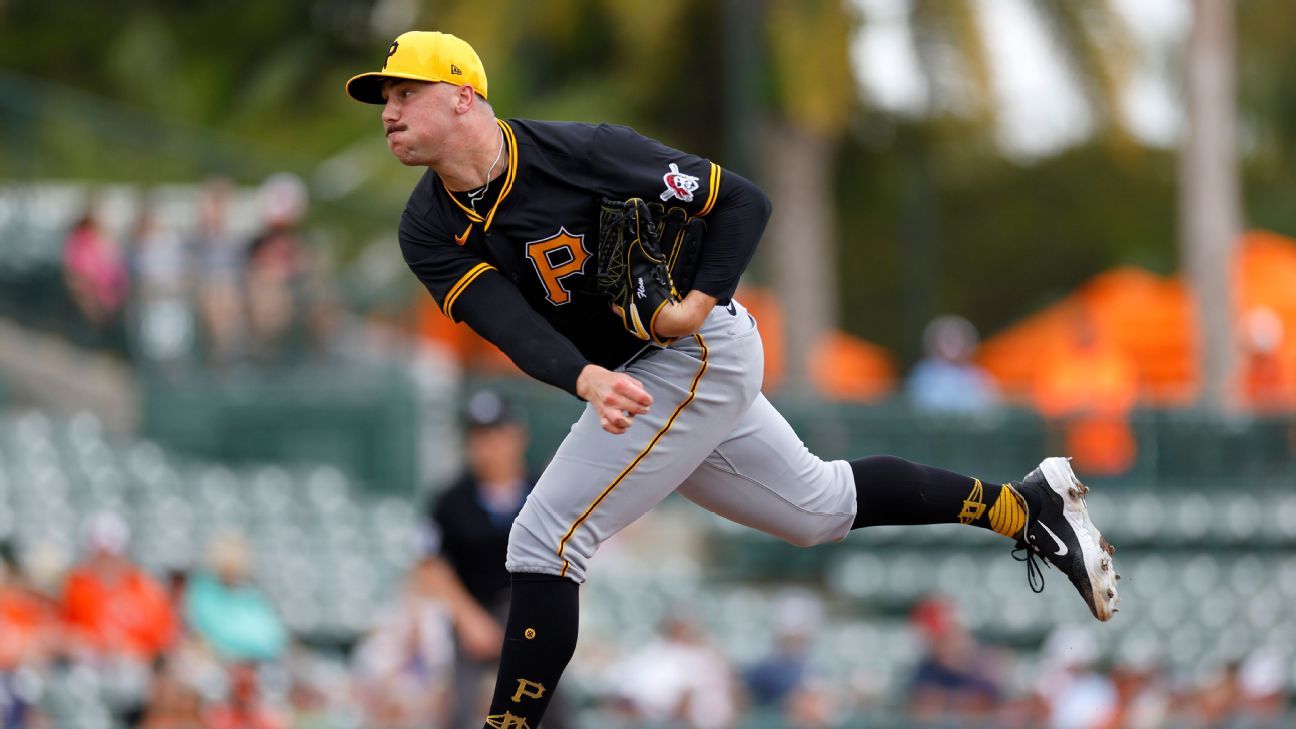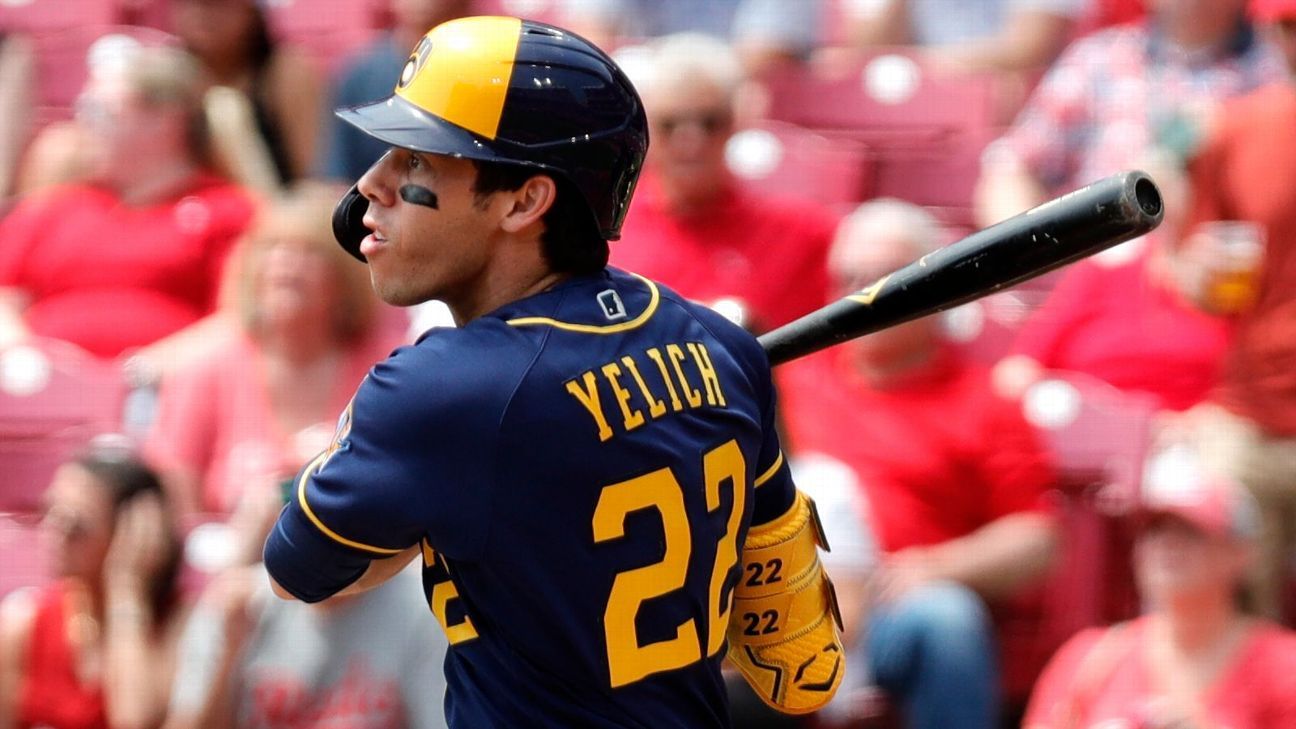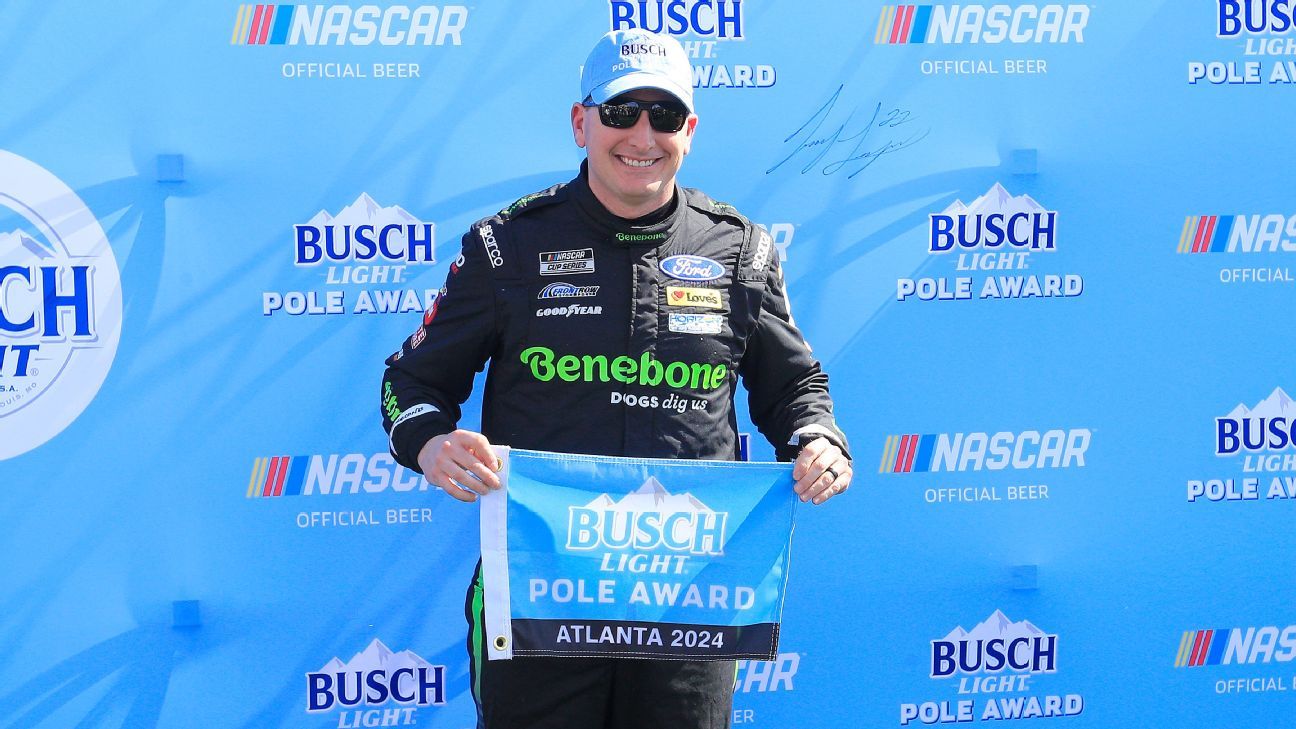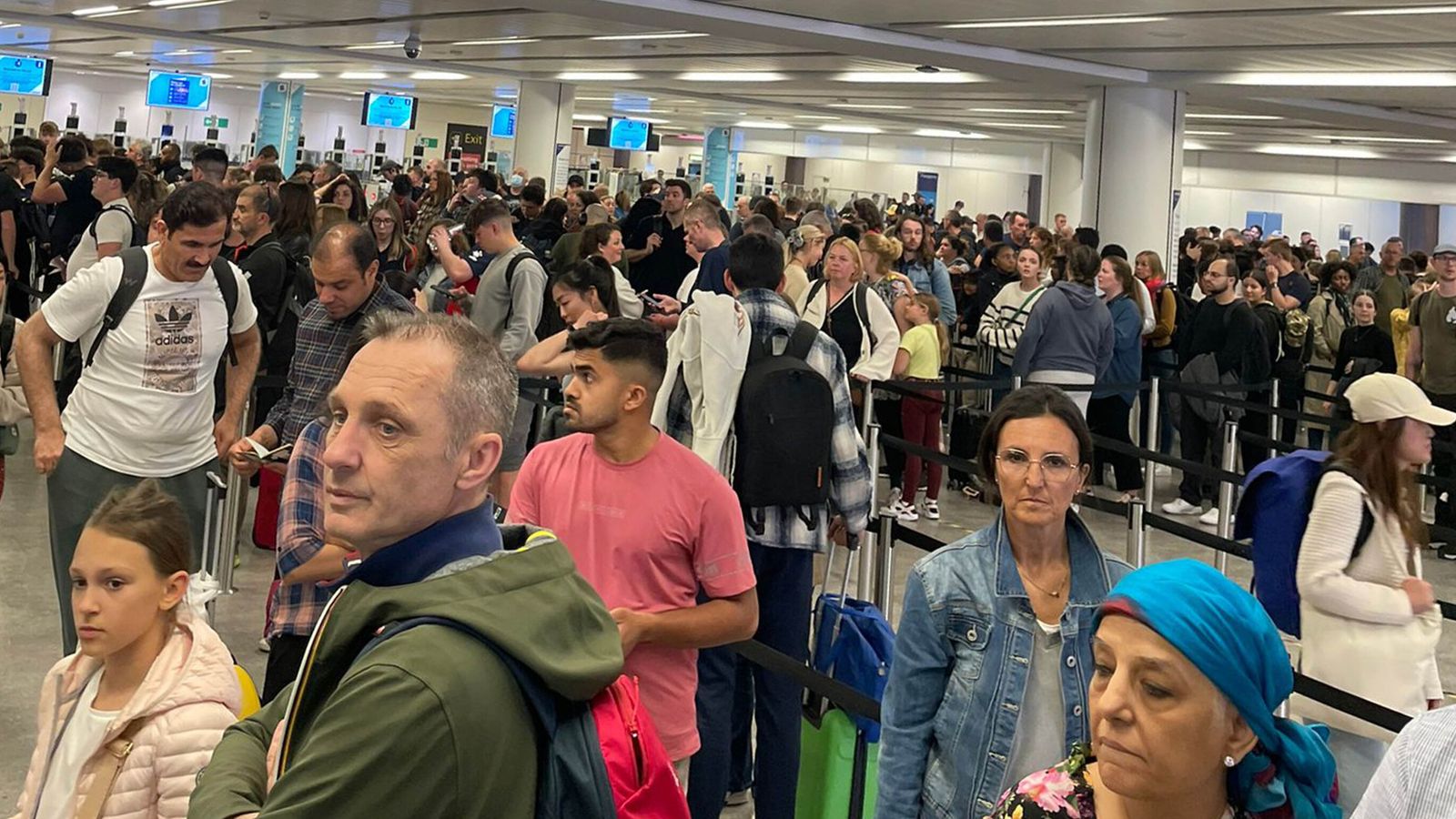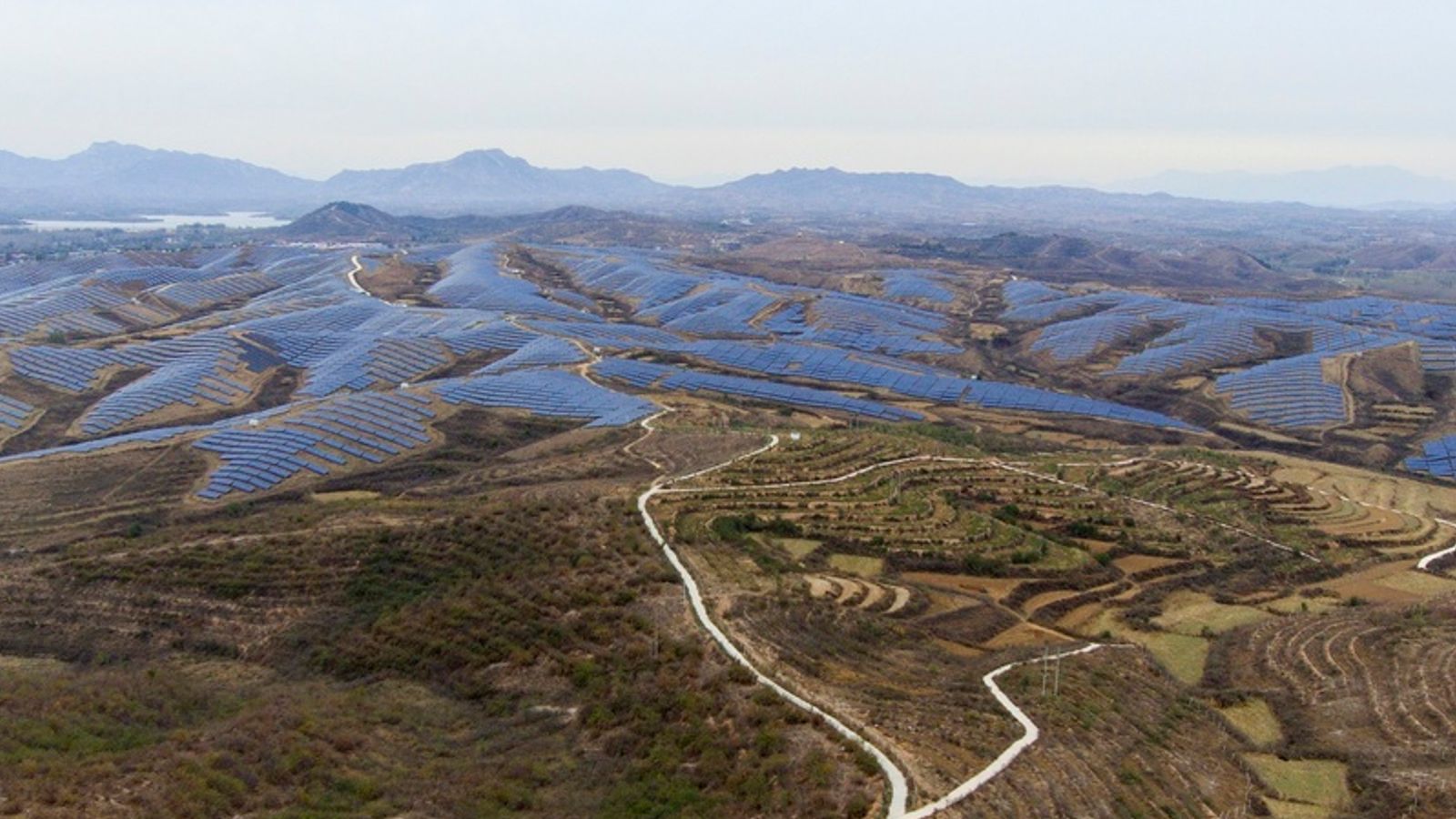
Following
This season will include 100 exclusive regular-season games across ESPN, ESPN+, Hulu and ABC. More than 1,050 out-of-market games will be available to ESPN+ subscribers via NHL PowerPlay on ESPN+.
• How to watch
• Subscribe to ESPN+
• Stream the NHL on ESPN
Another facet that players have discussed about neck protection devices are both the comfort and the current technology that exists.
Nashville Predators defenseman Tyson Barrie shared how while neck protectors can cause a bit of discomfort while also making a player feel warmer, the device itself is essentially like wearing a weighted turtleneck.
Predators forward Colton Sissons said that while there are junior leagues that are making neck guards mandatory, there are questions about the effectiveness of the products that are currently on the market.
“I haven’t seen what a modern neck guard looks like in years,” Sissons said. “We’ll probably be talking about it further with the league, and some of our training staff has been talking about it. We wear the cut-proof socks now, and a lot of guys wear wrist guards and stuff like that. I am sure every team has them available. We had Ryan Johansen get a pretty good skate cut last year, and he was wearing the socks, thankfully. He still sustained quite a bit of damage, but it certainly helped I’m sure.”
Calgary Flames coach Ryan Huska said the organization has made it a priority to provide players with protective equipment such as neck guards along with cut-resistant sleeves and socks. Huska said there have been Flames players who have tested neck guards just so they can get a feel for what it would be like to wear one.
Huska echoed a sentiment that Sissons also raised in that while players are concerned with safety, there is a discussion to be had about wearing equipment that does make them feel comfortable.
“Oftentimes, once they get to it and it does not change anything about them, you see the change get made,” Huska said. “We have a lot of our players that have had our equipment manager stitch kevlar-type patches into certain parts of their equipment because those are areas where you sometimes see skate cuts happening a little more often.”
Flames captain Mikael Backlund said that while neck protectors would be an adjustment, he believes it’s something players would eventually adapt around.
Backlund said he got a chance to see one of Bauer’s new neck protection options, which he said is a fully sleeved garment.
“But it didn’t have the full protection on the wrist,” said Backlund, who wears cut-resistant socks and sleeves. “They got to come up with something that has a little bit of everything. … The ideal would be to have the extra protection and when someone comes out with that, I’ll try that out and see how I feel.” — Clark
Why would anyone be opposed to wearing neck protection?
Is there an issue with how it looks to wear it? Hockey Hall of Famer Hayley Wickenheiser rightfully called out players who don’t wear neck guards because of that reason.
“I know it may not pass the ‘cool’ factor, but it’s time for mandatory neck protection at every level in hockey. The risk is far too great not to,” said Wickenheiser, who wore a neck guard for decades while playing for the Canadian national team.
But there has also been some functionality arguments about neck guards. Some players find them uncomfortable, because of their bulk; or in the case of Buffalo Sabres defenseman Rasmus Dahlin, their temperature.
“I kind of tried it out for the first time during the game, but it didn’t last that long,” Dahlin told the Buffalo News. “I’m going to wait until they develop something. It was very warm and I felt very uncomfortable using it, so hopefully someone develops something nicer in the near future.”
As Dahlin said, some players aren’t wearing neck guards because they’re waiting for technology to deliver more options for skate-cut protection. That’s one of the reasons teams haven’t mandated neck guards in the lower levels of their organizations like the Penguins have.
But the biggest factor behind players not wearing neck guards is that they’re not required. Players see their use as a matter of personal choice.
“I think it’s personal preference for everybody,” Oilers star Connor McDavid told the Edmonton Journal. “I see lots of guys have cut-proof stuff, I see some guys who don’t wear much at all. It’s all choice.”
Philadelphia Flyers GM Daniel Briere said players opting not to wear neck guards might be simply pushing back at change — or bristling at the idea they could be mandated by the NHL.
“I expect [pushback] at first. It’s always tough to change, right? We’re resistant to change. That’s just the human nature. I understand,” Briere said. “Unfortunately you’re always waiting for something tragic to happen for change to come. Hopefully we don’t have to wait for another [accident].”
Briere played through both the NHL visor mandate and the increased use of Kevlar socks during his career.
“I think over time you look at the Kevlar socks. When they first came out, it was awkward and it took time for the guys to put them on — and there’s no mandate to have them on,” he said. “But most guys are realizing how important it is. So like I said, at first, the change hits and we’re resistant. But I think over time, more and more people will jump into more protection.” — Wyshynski
What are NHL teams saying?
Johnson’s death resonated loudly with the Penguins. He played all 13 of his NHL games with the Penguins and was in their minor league system for three seasons.
Pittsburgh’s minor league teams — Wilkes-Barre/Scranton of the AHL and Wheeling of the ECHL — mandated neck guards and wrist guards for their players.
“We can’t do that at the NHL level, but we can certainly strongly encourage, and that’s our hope,” Penguins coach Mike Sullivan said. “Hopefully, as a league, we can work towards developing more options for guys in the protective department. Hopefully, there will be an initiative here moving forward. I think that could be one of the positive things that could come out of this terrible tragedy.”
Penguins equipment staff also made neck guards available to players, a handful of whom tried them out.
The Tampa Bay Lightning have several options for players for neck guards, including base-layer turtlenecks that have neck protection built into them. Head equipment manager Colten Wilson told the Tampa Bay Times that there has been more testing on cut-resistant equipment that protects players’ arms and legs than on neck guards — and that every year more effective fabrics are being developed.
But Pittsburgh is the only team to mandate its minor leaguers wear neck guards. Other teams are leaving neck and wrist protection up to player choice, while also waiting to see how safety technology continues to develop.
“I think they’re improving, but there’s room for more improvement, always,” Briere said. “I want to know what’s out there.” — Wyshynski
What is the NHLPA saying?
NHLPA executive director Marty Walsh said that NHL commissioner Gary Bettman called him the morning after the accident that led to Adam Johnson’s death to see where their organizations were on the neck guard issues.
After speaking with Bettman, Walsh reached out to Joe Reekie, a former NHL defenseman who heads the union’s player safety initiatives. Reekie and his counterpart at the NHL will speak at the All-Star Game in Toronto in February, as part of the NHL/NHLPA Protective Equipment Subcommittee, about next steps for neck guards and other safety measures.
“We’re going to explore everything,” Walsh said. “It’s in the immediate aftermath of a tragedy. I think we have to continue to have conversations on this as we move forward here. It’s a change for the players, but it’s also about protecting them, so I think we will have those conversations as we move forward here.”
Walsh, who was hired to replace Don Fehr earlier this year, is about a third of the way through his “listening tour” of NHL teams. If skate-cut protection wasn’t on the agenda in those meetings, it certainly is now.
Bettman said the neck guard issue hasn’t been moved to the front-burner because of Johnson’s death. He said the NHL and NHLPA have been studying ways to better protect players from skate cuts for some time in a joint committee.
“We’ve been studying, with the players’ association, cut-resistant materials,” Bettman said. “It’s not something new. Ultimately it’s something that, if we’re going to require more, we and the players’ association need to come to an understanding on.”
Bettman also indicated that making neck guards a mandated piece of equipment is on the table with the NHLPA.
“Whether it’s something that’s mandated directly or on a phased-in basis, that’s something we’ll discuss with the players’ association,” he said. — Wyshynski
What’s the deal with T.J. Oshie and his company that makes protective equipment?
Oshie founded Warroad — a hockey company creating performance-focused products that enhance safety and recovery — in 2018. Named after his hometown in Minnesota, Warroad has advocated for cut-resistant apparel to protect players on the ice.
After news of Johnson’s death circulated, Oshie told The Associated Press he received about “100 text messages” from players who wanted to know more about neck protectors, and revealed Warroad’s entire stock of neck and wrist guards had sold out.
Oshie has not previously worn neck protection but told reporters after what happened to Johnson he was ordering several of Warroad’s protective turtlenecks for himself and other Washington Capitals teammates to try in the future. Oshie himself has been wearing them in Capitals games for the past week.
Warroad currently has a waiting list available for customers who want to preorder gear, and the company said it remains “steadfast in our mission to offer … the highest quality skate-cut protection in the game.” — Shilton
Looking back, how did the process of mandating visors work?
The NHL began discussing a visor mandate after a slew of players — including Marc Staal and Manny Malhotra — suffered gruesome eye injuries. In June 2013, the league’s competition committee met to discuss how to implement a new rule around the equipment and decided to require visors for any skater with fewer than 26 games experience at the start of the 2013-14 season; players with more than that level of experience could opt not to wear one.
The decision was subsequently approved by the NHL’s board of governors and the NHLPA. By that point though, visor usage had increased to where nearly 75% of players were already wearing them (compared to just 50% in 2007). The visor might have been mandatory sooner, but pushback from some players who’d never worn one — and weren’t interested in starting — forced the 26-game compromise.
Briere noted that the neck guard issue could follow the same trajectory as the visor one, in that peer pressure could expedite things.
“I remember when I started early on, I didn’t wear a visor in my first year pro and I wanted to show everyone that as a little guy, I wasn’t afraid,” he said. “And then Bobby Smith grabbed me one day and he’s like, enough of this, we know you’re tough. Just put a visor on for safety reasons. And I did and never had a problem after that.” — Shilton and Wyshynski
Aside from neck protection, has there been any call for wrist or ankle protection, too?
Both the AHL and ECHL introduced the mandate of cut-resistant socks and wrist sleeves at the start of the 2023-24 season. In terms of the NHLPA, the understanding is that there is no mandate on that front, but that also comes with the caveat that if a discussion were to happen that there’d be more options for cut-resistant socks and wrist sleeves compared to neck protection devices. — Clark
Has USA Hockey signaled any forthcoming changes to its policy on neck protectors?
USA Hockey does recommend its players wear neck guards, but they are not required.
Spokespersons for prominent youth leagues around the United States have said in the wake of Johnson’s death they will continue to take their directions on the matter from USA Hockey in recommending — but not forcing — players don the extra layers.
The sport’s governing body has faced issues like this before without changing its policy on neck guards as well. In January 2022, high school hockey player Teddy Balkind — a 10th-grader at St. Luke’s School in New Canaan, Connecticut — died after his neck was accidentally cut by an opponent’s skate blade. USA Hockey officials met following Balkind’s death and opted not to make neck protection mandatory but to just reinforce that it’s recommended (along with cut-resistant socks and sleeves).
To this point, USA Hockey’s stance has not deviated. — Shilton
What about women’s professional hockey?
Hockey Canada already requires its women’s hockey players to wear neck guards. The Professional Women’s Hockey League — which begins play on Jan. 1, 2024 — is having “ongoing discussions” about mandating neck guards for players in the future, according to a league spokesperson. — Shilton


